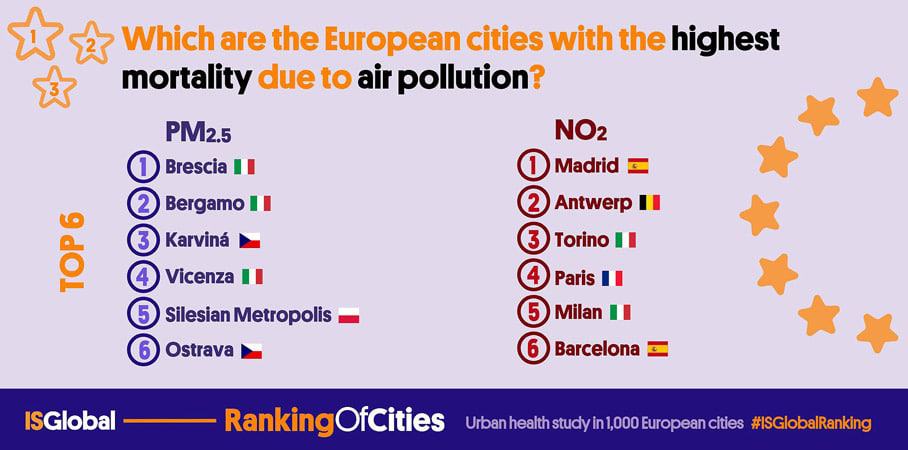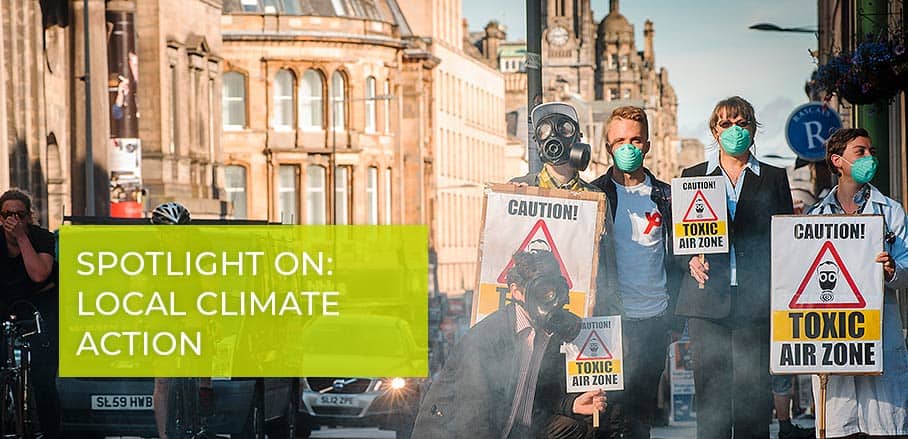Cities Are Still Not Doing Enough to Reduce Air Pollution
Despite scientific evidence of the relation between air pollution and premature deaths, cities are hesitant to take bold action for clean air. Mark Nieuwenhuijsen and Sasha Khomenko on reasons and perspectives.
Air Pollution in Cities
European cities are still hotspots of air pollution, with high levels of fine, inhalable particles (PM2.5) and Nitrogen Dioxide (NO2), which are the air pollutants of most concern in urban areas. 84 and 9 per cent of Europe’s urban population are exposed to PM2.5 and NO2 levels above the critical levels identified by the World Health Organisation’s (WHO) guideline, respectively.
The main sources of PM2.5 in cities include traffic, local fuel combustion from household heating, industrial combustion, and wood and coal burning. The main source for NO2 is motor vehicle emissions, particularly from diesel engines (the older they are, the more they pollute). NO2 levels are generally higher in cities due to their higher volume of traffic and are usually related to the way cities are designed.
As recent evidence suggests that there is no level of air pollution that can be considered “safe”, simply adhering to WHO guidelines can no longer be considered a suitable protection measure.
Air Pollution and Health Impacts in Cities
Air pollution levels in European cities have been going down over the past 20 years. But they have not been going down fast enough, with the current levels still causing disease and deaths. A recent large study in almost 1,000 cities in Europe showed the considerable adverse health impacts air pollution has on urban residents’ health. The study estimated that 51,000 and 900 premature deaths could be prevented each year, respectively, if all the cities analysed were to achieve the PM2.5 and NO2 levels recommended by the WHO.
Furthermore, if all of the cities were to match the air-quality levels of the least polluted city on the list, even more deaths could be prevented; 125,000 for PM2.5 and 79,000 for NO2. The study found large variability in the air pollution levels and related premature mortality in the cities. The highest rates of mortality attributable to NO2 were found in large cities in Spain, Belgium, Italy, and France. For PM2.5, the cities with the highest mortality burden were in Italy’s Po Valley, southern Poland, and the eastern Czech Republic. The lowest rates of mortality attributable to air pollution were found in Northern European cities.
Time for Action
Obviously, more stringent measures are needed in cities to reduce air pollution and related mortality. Even though citizens have often expressed concern about air pollution levels, it has not risen to the top of local politicians’ agendas. Instead, some local politicians even downplay the risk of air pollution, as examples from Belgrade and Sarajevo show. But also vested interest, for example from the car lobby, have prevented the necessary measures to be taken.
There is an additional aspect that might cause cities to be hesitant when taking bold action against air pollution: for many known diseases, the link between cause (risk factor) and effect (disease) appears quite clear. For instance, for an infectious disease such as COVID19, one can show easily a link between the virus and the disease. However, for air pollution and disease, this is much more difficult as it is mainly based on statistical models, and some will ask, where are the bodies? This, however, should not stop us from taking measures to reduce air pollution, as it has been linked to disease and deaths in many robust scientific studies.
And air pollution can be reduced. For example, when most European countries introduced lockdown measures in the spring of 2020 to reduce transmission of COVID-19, this led to significant reductions in emissions of air pollutants, particularly from road transport, aviation, and international shipping. In some cases, NO2 emissions went down by as much as 60 per cent.
Health should be an important argument for action. Incentivising policy and decision makers to develop policies accordingly, a new website shows the average air pollution levels and associated mortality burden in almost 1,000 cities in Europe and ranks the cities using a risk algorithm.
How to Reduce Air Pollution
To reduce air pollution, we need to urgently reduce private motorised traffic and move towards public and active transportation; we need a reduction of emissions from industry, airports and ports; and a ban on domestic wood and coal burning while planting of more trees in cities, which will make cities not only healthier, but also more liveable and sustainable.
The electric car is gaining popularity and is often seen as the solution to tackle air pollution. It does so only to a certain extent though, as non-tailpipe emissions will still be there. Also, they do not address the lack of physical activity in the population, and still use a lot of public space that could be used in a better way.
Cities should dare to implement new urban concepts such as the “Compact City”, Barcelona’s “Superblocks”, Paris’s “15-Minute City”, Hamburg’s “Car-Free City”, or a mixture of these. They do not only address air pollution, but can also address noise, heat island effects, and lack of physical activity.
Finally, addressing the climate crisis and air pollution are going hand in hand, as fossil fuels are a main driver of both. Therefore, the European Green Deal may be an opportunity to not only address the climate crisis, but also air pollution in cities. It is a comprehensive road map striving to make the European Union more resource-efficient and sustainable – and a great opportunity to make cities carbon-neutral, more liveable, and healthier through better urban and transport planning and lower air pollution levels.

Ranking of Cities © ISGlobal
- Why Cities Are Letting Down Children - 14. December 2021
- Can Cities Become Car-Free After the Covid19 Pandemic? - 28. May 2020
